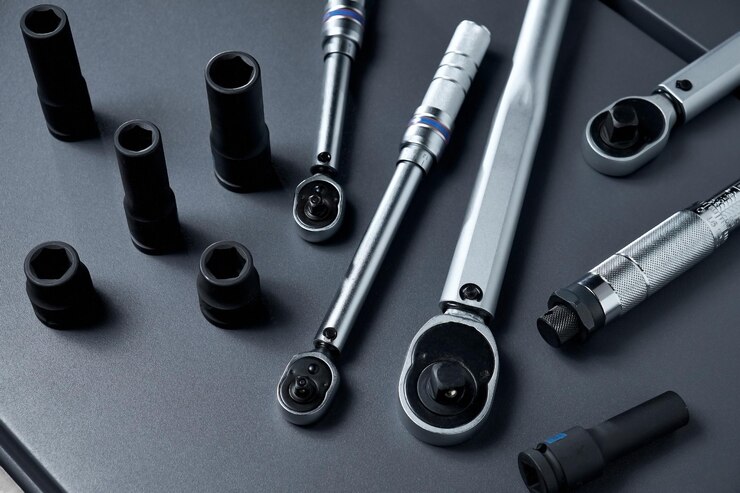In industries where precision and safety are paramount, such as automotive, aerospace, manufacturing, and construction, the accuracy of tools directly impacts product quality, safety, and compliance. One of the most vital tools in these fields is the torque wrench—used to apply a specific torque to fasteners like nuts and bolts. However, even the most advanced torque wrenches can drift from their specified settings over time due to regular usage, mechanical wear, or environmental factors. This is where torque wrench calibration services come into play.
What Is Torque Wrench Calibration?
Torque wrench calibration is the process of verifying and adjusting a torque wrench’s accuracy to ensure it delivers the correct amount of torque as specified by the manufacturer or industry standards. Calibration is usually carried out using a torque tester or analyzer, which measures the output of the wrench against known standards. If discrepancies are found, the wrench is adjusted accordingly.
This process is often performed in a certified calibration lab that follows national or international standards such as ISO 6789, ANSI/NCSL Z540, or ISO/IEC 17025.
Why Is Torque Wrench Calibration Important?
- Ensures Safety
Under-torqued or over-torqued fasteners can lead to critical failures. In automotive applications, improper torque can cause engine damage or wheel detachment. In aerospace, it can compromise the structural integrity of aircraft components. - Maintains Product Quality
In manufacturing and assembly lines, consistent torque is essential to maintain uniform product quality. Incorrect torque can lead to material fatigue, structural weakness, or warranty claims. - Complies with Industry Standards
Regulatory bodies and quality certifications (like ISO 9001 or IATF 16949) often mandate regular tool calibration. Torque wrench calibration records help ensure audit readiness and traceability. - Extends Tool Life
Routine calibration helps identify worn or damaged components early. Maintenance or replacement of internal parts ensures that the tool remains in optimal working condition.
When Should a Torque Wrench Be Calibrated?
There are several recommended intervals for calibration, including:
- Time-Based: Every 6 to 12 months, depending on usage frequency and environment.
- Usage-Based: After a set number of cycles (e.g., 5,000 uses).
- Event-Based: After any incidents like dropping the wrench or exposing it to extreme temperatures or humidity.
- Before Critical Projects: Any time the wrench will be used for precision-sensitive or safety-critical operations.
Many industries follow a documented schedule to maintain compliance and avoid production disruptions.
The Calibration Process: Step-by-Step
- Initial Inspection
The torque wrench is visually inspected for physical damage, wear, or contamination. - Measurement Setup
The wrench is connected to a torque analyzer calibrated to national/international standards. It’s tested at multiple torque points (e.g., 20%, 60%, 100% of full scale). - Data Collection
Output readings are compared to expected values. Acceptable deviation limits are typically ±4% for most industrial-grade torque wrenches. - Adjustment (If Required)
If the readings are outside acceptable limits, internal mechanisms are adjusted. Some digital wrenches may require firmware recalibration. - Re-Testing & Certification
After adjustments, the tool is retested. If it meets the tolerance criteria, a calibration certificate is issued. - Labeling & Documentation
The wrench is tagged with a calibration label showing the date, technician, and due date for the next calibration. Full documentation is provided for records and audit trails.
Types of Torque Wrenches Calibrated
- Click-Type Torque Wrenches
- Beam Torque Wrenches
- Dial Torque Wrenches
- Electronic (Digital) Torque Wrenches
- Hydraulic Torque Tools
Each type requires different handling and setup during calibration due to their unique mechanisms.
Choosing a Reliable Calibration Service Provider
When selecting a calibration lab, ensure the following:
- Accreditation: Look for ISO/IEC 17025:2017 accredited labs.
- Traceability: Calibration should be traceable to national/international standards.
- Turnaround Time: Timely service is crucial, especially in industrial settings.
- On-Site Services: Some providers offer mobile calibration services for minimal operational downtime.
- Detailed Reporting: Ensure the provider issues a comprehensive calibration certificate with measurement data and uncertainties.
Cost vs. Risk: Why It’s Worth It
While some businesses hesitate to invest in regular calibration services, the risks of skipping them are far greater. A single bolt torqued incorrectly could lead to:
- Costly product recalls
- Safety hazards or injuries
- Equipment failure and downtime
- Legal or regulatory penalties
- Damaged brand reputation
By contrast, routine calibration is a modest investment that pays off through reliability, compliance, and peace of mind.
Conclusion
In high-precision industries, the importance of torque wrench calibration services cannot be overstated. As a cornerstone of safety, quality, and compliance, calibration ensures that every fastener is tightened just right—nothing more, nothing less. Regularly calibrated torque tools reduce risk, enhance efficiency, and help businesses maintain their commitment to excellence.


